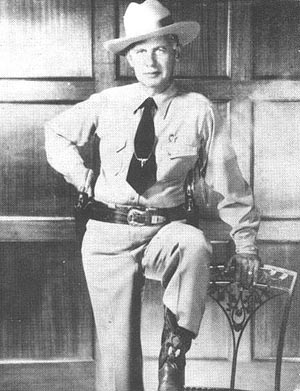Manuel “Lone Wolf” Gonzaullas, Texas Ranger
The Ranger who tamed oil and gas boom towns during the Great Depression. “Crime may expect no quarter.”
During much of the 1920s, a Texas Ranger became known for strictly enforcing the law in oilfield communities. By 1930, the discovery year of the largest oilfield in the lower 48 states, he was known as “El Lobo Solo” — the lone wolf — the Ranger who brought law and order to East Texas boom towns.
Manuel Trazazas Gonzaullas was born in 1891 in Cádiz, Spain, to a Spanish father and Canadian mother who were naturalized U.S. citizens. At age 15 he witnessed the murder of his only two brothers and the wounding of his parents when bandits raided their home. Fourteen years later, Gonzaullas joined the Texas Rangers.

“Give Texas more Rangers of the caliber of ‘Lone Wolf’ Gonzaullas and the crime wave we are going through will not be of long duration,” reported the Dallas Morning News in 1934.
“He was a soft-spoken man and his trigger finger was slightly bent,” independent producer Watson W. Wise characterized him during a 1985 interview in Tyler, Texas. “He always told me it was geared to that .45 of his.” (more…)

